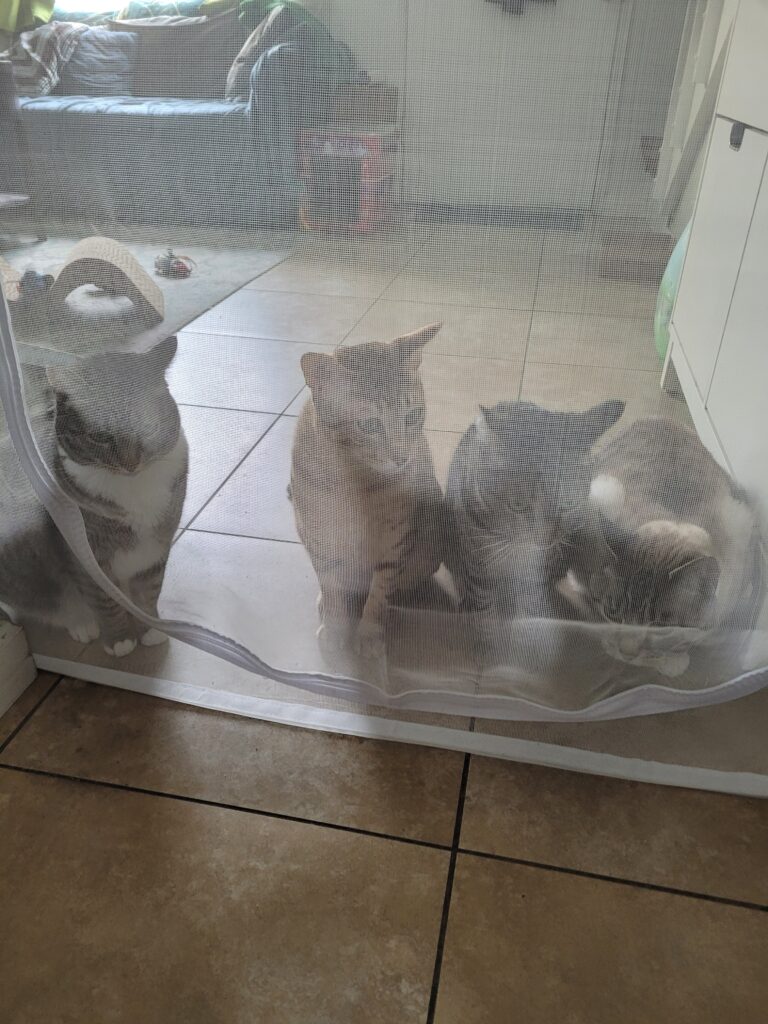
How To Foster A Cat
Welcoming a foster cat into your home is a heartwarming and fulfilling experience that provides much-needed love and care to a cat in need. Fostering a cat requires patience, compassion, and dedication, but the rewards are immeasurable.
This guide will walk you through the entire process of how to foster a cat to help make your cat fostering experience a success. Whether you’re a seasoned cat owner or new to cats, you’ll pick up a few tips for which your cat will thank you.
How to become a cat foster
The first step in fostering a cat is to contact your local shelter, humane society, or animal rescue organization and learn about their cat foster program. You can fill out a foster pet application, which usually includes your contact information and details about your current pets and living circumstances. Many animal rescues will contact you once your foster application is reviewed and help you get started with their program.
It is up to the shelter to assist you in selecting the perfect cat for your care and provide you with all the details of your fostering duty. You will also be made aware of any special needs the cat may have, if any are known.

Shelters want to know that you are committed to the cats and the program, so it’s important to take the application and foster parent responsibilities seriously.
How Long Do You Foster A Cat?
Fostering a cat usually lasts a few weeks to a few months, but on average, about two months. Some foster cats will even be permanently adopted by their foster parents, which is commonly called “foster failing.” Most cats will be acclimated within a few weeks and be ready for adoption, which may also take a few weeks to find the right new family.
The length of the foster will depend on a few factors. The cat’s health, attitude, temperament, general adaptability, and availability of adopters, to name a few. It usually takes about two weeks for a foster cat to acclimate to the foster environment, so be prepared to foster the cat for at least a few weeks.
Foster kittens may acclimate faster than adult cats and senior cats, but it’s on a cat-by-cat basis.
How Much Does It Cost To Foster A Cat?
Fostering a cat is usually free. However, you may want to provide a few additional creature comforts for your new kitty.
You’ll need to equip your home with essentials like a litter box, cat litter, food and water dishes, and cat food.
Many shelters will provide food and litter. However, smaller shelters may also ask that the foster contribute the supplies as a donation. Food and litter, on average, can cost $100 a month per cat.
In addition to these basic supplies, consider having cat toys, scratching posts, and comfortable beds for them.
In case your foster cat has any specific needs or health issues, you might also need additional supplies such as special dietary food, medication, or grooming tools. Remember to consult with the animal rescue organization or shelter for any specific recommendations they have for your foster cat.
How to prepare a cat foster room
There are a few things you should do to prepare for the arrival of your new foster cat. It’s always a good idea to place any new cat into a bedroom all by themselves. Some shy cats will take two weeks to feel comfortable free walking around the house.
You should make sure that your room is free from any hazards or items that could harm the cat. Remove cords, small objects, hazardous plants, and anything else that could be dangerous for a curious kitty. Don’t forget to block off windows and screens to prevent your cat from clawing their way out the window.
In addition to all the essentials such as bedding, toys, litter boxes, and food, all the best cat rooms are a quiet place that have accessible hiding places, scratchers, boxes, toys, cat trees, a good scratching post, and sunshine. A good home environment will contain all the creature comforts a kitty wants, which also makes playing and training sessions more effective.

Many cats will hide under the bed or in a closet, so it’s important to block off unders and deep hiding spots so you can socialize the cat. Cats like hiding spots, so the ideal spots are accessible to you but in the corner and hidden enough for the cat to feel comfortable and safe.
I like a screen room separator that allows the foster room to remain open while still separated from other cats.
How To Get Your Foster Cat Adopted
The shelter you are fostering from will usually provide adopters through their network and Petfinder accounts. However, sometimes shelters don’t have a large audience reach, and it can help to promote the cat yourself.
The good news is that you can take pictures and catalog your journey as you play and socialize with your cat. After all, happy cats and funny cat pictures will definitely help your foster cat get adopted.
Socializing your foster cats
Once you have welcomed a foster cat into your home, the next step is to prepare them and promote them for adoption. Your foster kitty must be ready for adoption before they can find their forever homes!
The key to a successful fostering experience is socialization, even with an adult cat. You should spend time with your foster pets daily in order to get them used to being around people and other animals. Playing with the cats and giving them lots of positive reinforcement will help build their confidence.
It’s also important to make sure they are healthy, flea and worm-free, and have vaccinations done before they can go up for adoption to their permanent home. The rescue or shelter you are working with should provide these services for their foster homes.

Promoting your foster cat for adoption
Promoting your foster cat or foster kitten starts with taking captivating photos and videos. Take high-resolution, well-lit pictures that showcase the cat’s personality. Capture them playing with toys, purring during a cuddle session, or exploring their surroundings. Videos can be a powerful tool for storytelling and showcase the cat’s quirky behaviors.

Remember to consider the scene’s background as well. Clean, uncluttered backgrounds help keep the focus on the cat. Use a simple blanket, a cozy cat bed, or a sunny windowsill. Avoid distracting elements in the frame, like dirty clothes, toilets, and trash bins, so you can keep the focus on your adoptable cats.
Once you have a collection of beautiful photos and videos, you can post foster stories on sites like Facebook, Instagram, or Nextdoor. Encourage your network to share these posts to reach a larger audience. Remember to include key information about your foster cat’s personality, likes and dislikes, and any unique traits or experiences they may have.
You can also talk to pet stores or vets in your area who could help promote your foster cat for adoption.
Finally, you may need to meet with potential adopters and support the process by sharing stories and details about the cat. This is an important step to make sure your foster cat (who you love!) is going into a safe and loving environment.
How To Say Goodbye
That long-anticipated day finally arrives when you have to say goodbye to your furry foster friend, and it’s never easy! There are times when a foster family does choose to adopt their fosterling cat and make them their own pet, but in many cases, the foster can help another animal in need find adoption.
Sadness is natural because you’ve built a strong bond with your foster cat. But you should also feel comfort knowing you’re saving lives and helping shelter or rescue animals find their forever homes without spending their time in a shelter environment.
To make the transition from a foster to their adopters a bit easier, you can write the new owners a handwritten card to help them get to know their new kitty. You can also provide the new owners with any toys or bedding the cat enjoys. Yourshelter’s rescue coordinator might also provide supplies to the adopted new pet.
Here are some of our favorite cat products that will help you bond.
Don’t forget to include an up-to-date list of medical or behavioral issues, medical care, or their medical condition. Lastly, keep a cat foster journal to record all your foster cats and your fond memories!
Conclusion
You’re now ready to embark on your cat foster journey! Enjoy the foster experience and share it with your friends and family. Your network will support you and help you find a loving forever home for your foster animals.
So, if you have a spare room, some extra time, and are passionate about animals, you should definitely foster a cat! You and your entire family will be glad you did.



